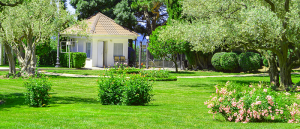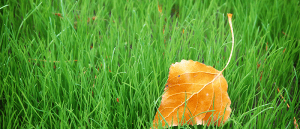Lawn Watering in August: What West Warwick Homeowners Need to Know
Lawn Watering in August: What West Warwick Homeowners Need to Know
August is peak “stress season” for cool-season lawns in West Warwick and across Rhode Island. Days are warm, humidity runs high, rain can be hit-or-miss, and cool-season grasses (like Kentucky bluegrass, perennial ryegrass, and fine fescues) naturally slow down—or even go dormant—until cooler nights return. The right watering routine this month can be the difference between a lawn that limps into September and one that rebounds fast when fall arrives.
At 4everGreen, we care for hundreds of thousands of square feet of turf in Kent County, so here’s our practical, Rhode-Island-specific guide to watering wisely in August.
1) Start with the local reality: August weather & RI grasses
What August feels like in West Warwick: In nearby Providence, normal daily highs slide from about 82°F to 78°F through August, with nights in the low-to-mid 60s—warm enough to push cool-season turf to its limits. (Weather Spark)
What’s growing in your yard: Most Rhode Island lawns are cool-season grasses—Kentucky bluegrass, perennial ryegrass, and fescues—because they love spring and fall, then struggle in summer heat. In mid-to-late summer, these grasses often go dormant (turn tan) to protect themselves; that’s normal and reversible with fall weather. University of Rhode Island outreach and local lawn/water agencies consistently emphasize that lawns do not need constant summer soaking. (University of Rhode Island)
2) How much water does your lawn really need?
 Aim for ~1 inch of total water per week, including rainfall. That’s the long-standing, research-backed benchmark for RI lawns to maintain active growth. If you choose to keep your lawn actively green through hot spells, going up to ~1.25–1.5 inches during a prolonged dry stretch can help—but more than that is usually wasteful and can promote disease and shallow roots. The Rhode Island Water Resources Board and URI programs both anchor around ~1 inch per week guidance. (University of Rhode Island)
Aim for ~1 inch of total water per week, including rainfall. That’s the long-standing, research-backed benchmark for RI lawns to maintain active growth. If you choose to keep your lawn actively green through hot spells, going up to ~1.25–1.5 inches during a prolonged dry stretch can help—but more than that is usually wasteful and can promote disease and shallow roots. The Rhode Island Water Resources Board and URI programs both anchor around ~1 inch per week guidance. (University of Rhode Island)
Pro tip: Put a few flat-bottom containers (e.g., tuna cans) around the lawn during a watering cycle. When they average about ½ inch filled, you know you’ve applied ½ inch—use that to plan two deep sessions per week that total ~1 inch.
What if you prefer to let the lawn rest? Allowing cool-season grass to go dormant (tan) in late summer is perfectly acceptable and conserves water. The lawn will typically green back up with September’s cooler temps and fall moisture. If you choose dormancy, give an occasional deep soak (~½ inch every 2–3 weeks) to protect crowns and roots from severe desiccation. URI materials explicitly note that a brown summer lawn isn’t dead; it can bounce back when conditions improve. (University of Rhode Island)
3) Timing is everything: Water early morning
The best window in Rhode Island is early morning, roughly 4–9 a.m. Watering then minimizes evaporation, helps more moisture reach roots, and reduces the time leaves stay wet (which lowers disease risk). Statewide guidelines call for once or twice per week applications in the early morning rather than frequent, shallow sprinkles. Avoid night watering—it encourages fungal issues—while midday watering wastes water to evaporation. (Cornell CALS)
4) Make August watering work on Rhode Island soils
 Our area has a mix of loams and sandy pockets. Use this checklist to keep water where roots need it:
Our area has a mix of loams and sandy pockets. Use this checklist to keep water where roots need it:
- Water deeply, not daily. Two deep sessions that penetrate 6–8 inches encourage stronger roots and better drought tolerance. (Cornell CALS)
- Cycle-and-soak on slopes or tight soils. If water runs off, split a 30-minute session into two 15-minute cycles with a break between to absorb.
- Calibrate your system. Different zones deliver different rates; measure with the tuna can method so each zone gets its fair share of the weekly inch.
- Mind microclimates. South-facing, full-sun areas, and windy corners dry out faster; shade and low-lying spots may need less.
- Use sensors & smart controllers. Rain sensors prevent unnecessary cycles; soil-moisture or weather-based controllers can optimize run times automatically—something we can set up and maintain for you. (Kent County Water Authority also promotes “smart” irrigation.) (kentcountywater.org)
5) Watch for these watering red flags
- Overwatering signs: Spongy ground, mushrooms, algae on soil, persistent leaf wetness in the morning, surge of leaf diseases. Cut back duration or frequency.
- Underwatering signs: Footprints linger in the turf, bluish-gray leaf color, wilting in afternoon heat, or “hot spots” turning straw-colored first. Increase depth per session rather than watering every day.
Remember: deep, infrequent watering beats daily shallow sprinkles for root health and summer resilience. That’s the consistent theme from turf researchers and RI agencies. (University of Rhode Island)
6) Work with summer dormancy—not against it
If you’re not committed to keeping it golf-course green in August, it’s fine to let the lawn nap. Mow high, keep traffic light, and avoid fertilizing heavily while turf is stressed. Resume normal cultural practices as temperatures moderate in late August and early September. URI and partner resources note that dormancy is a normal part of turf’s annual cycle; lawns re-green with fall moisture and cooler nights. (kentcountywater.org, University of Rhode Island)
7) Don’t forget the rest of the summer playbook
Watering is just one lever. Pair it with these August must-dos for Rhode Island:
- Mow higher—up to ~4 inches in summer. Taller grass shades soil, reduces evaporation, and discourages weeds. RI lawn guidelines specifically recommend higher mowing in summer. Keep blades sharp.
- Skip heavy fertilizing during heat. Hold major feedings for early fall when turf can use nutrients efficiently without stressing.
- Check irrigation coverage. Clogged or misaligned heads create dry crescents; fix them now to prevent “mystery” brown patches.
8) Respect local rules (and save money)
Water systems can be under strain in late summer. West Warwick is served by the Kent County Water Authority (KCWA), which issues conservation guidance and may post seasonal notices. Before you set a schedule, take one minute to check KCWA Public Notices for any current restrictions or requests to reduce outdoor use. Towns elsewhere in RI sometimes limit lawn irrigation to twice per week in peak season—so always verify before you water. (kentcountywater.org, northkingstownri.gov)
9) Planning ahead: August is the on-ramp to fall recovery
Here’s the silver lining: Late August into mid-September is prime time for overseeding and renovation in Rhode Island. As days cool, seed germinates fast, competition from summer annual weeds fades, and new roots establish before winter. If your turf thinned out in July/August, put a fall plan on the calendar now. (uri.edu)
What 4everGreen can do for you next: We’ll test soil, top-dress thin areas, select a Northeast-appropriate seed blend (bluegrass/rye/fescue), and tune your watering so seedlings get consistent moisture without runoff.
10) A simple August watering template (West Warwick edition)
Use this as a starting point and we’ll fine-tune it to your property:
- Set the goal.
- Want green turf all month? Target ~1 to 1.25 inches/week.
- Okay with dormancy? Keep occasional deep soaks (~½ inch every 2–3 weeks) to protect crowns.
- Pick your days and times.
- Two early-morning sessions per week (between 4–9 a.m.). Add a third if we hit an unusually hot, dry week.
- Dial in run times by zone.
- Use the tuna-can test to learn how many minutes deliver ½ inch in each zone. Set two cycles per week to total ~1 inch.
- Use cycle-and-soak where needed.
- If you see runoff, split each session into two shorter cycles with a 30–60 minute gap.
- Let rainfall count.
- If a storm delivers ¾ inch, run just one irrigation cycle that week. (We can pair your controller with a rain sensor so this happens automatically.) (kentcountywater.org)
- Audit weekly.
- Walk the lawn. If footprints linger, increase depth slightly. If turf feels mushy or disease pops up, reduce frequency.
- Mind the rules.
- Before adjusting anything, check KCWA notices for any temporary restrictions. (kentcountywater.org)
11) When to call 4everGreen
- Uneven color or chronic dry spots. We’ll check pressure, head spacing, and nozzles, then re-balance your zones.
- Controller confusion. We can program weather-based schedules, add a rain sensor, or install soil-moisture sensors to cut waste and protect turf. (kentcountywater.org)
- Post-summer recovery. Late August/September overseeding, top-dressing, and fall nutrition set your lawn up for a stronger 2026.
Final word
In Rhode Island, a thriving lawn isn’t about more water—it’s about timing, depth, and consistency, all tuned to our late-summer conditions and local guidelines. Whether you want that lush August green or you prefer to conserve and let the lawn rest, 4everGreen can design a watering and fall-recovery plan that fits your yard, your goals, and West Warwick’s realities.
If you’d like us to calibrate your system, install a rain/soil sensor, or map out a fall overseeding plan, send us a note. We’ll take it from here—so your lawn can look its best when the first crisp evenings arrive.
References & local resources
- Typical August temperatures (Providence/West Warwick area): WeatherSpark climate summary for August. (Weather Spark)
- RI lawn watering amount (≈1 inch/week) & dormancy guidance: URI Healthy Lawn Care; URI Water Conservation tips. (University of Rhode Island)
- Local conservation & “smart controller” encouragement: Kent County Water Authority Wise Water Tips (serving West Warwick). (kentcountywater.org)
- Fall seeding window (late Aug–mid-Sept): URI. (uri.edu)
Serving West Warwick, Warwick, Coventry, and the surrounding Kent County communities—4everGreen keeps Rhode Island lawns healthy, water-wise, and ready for fall.

